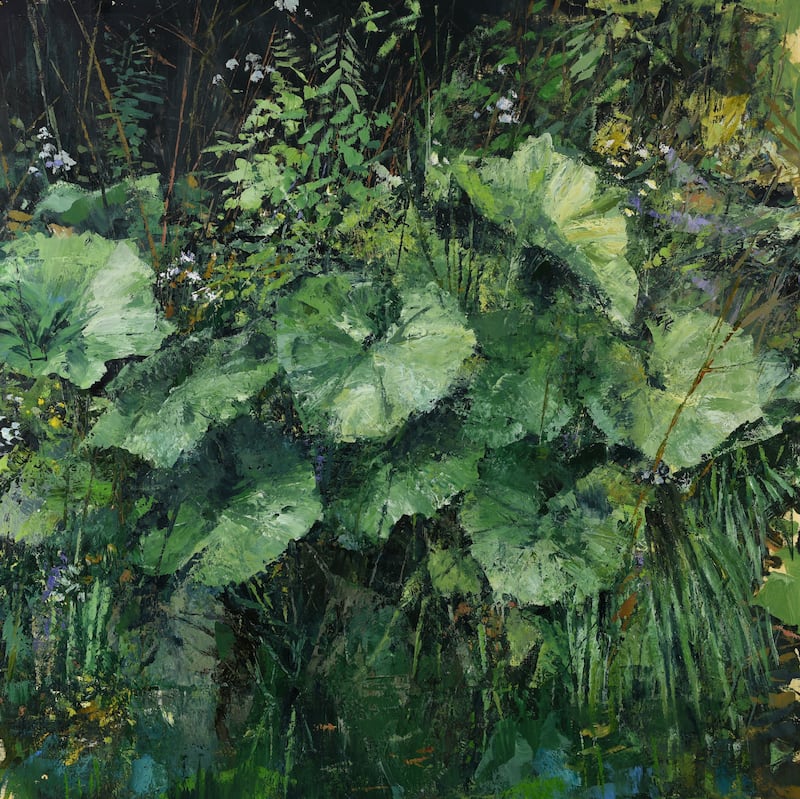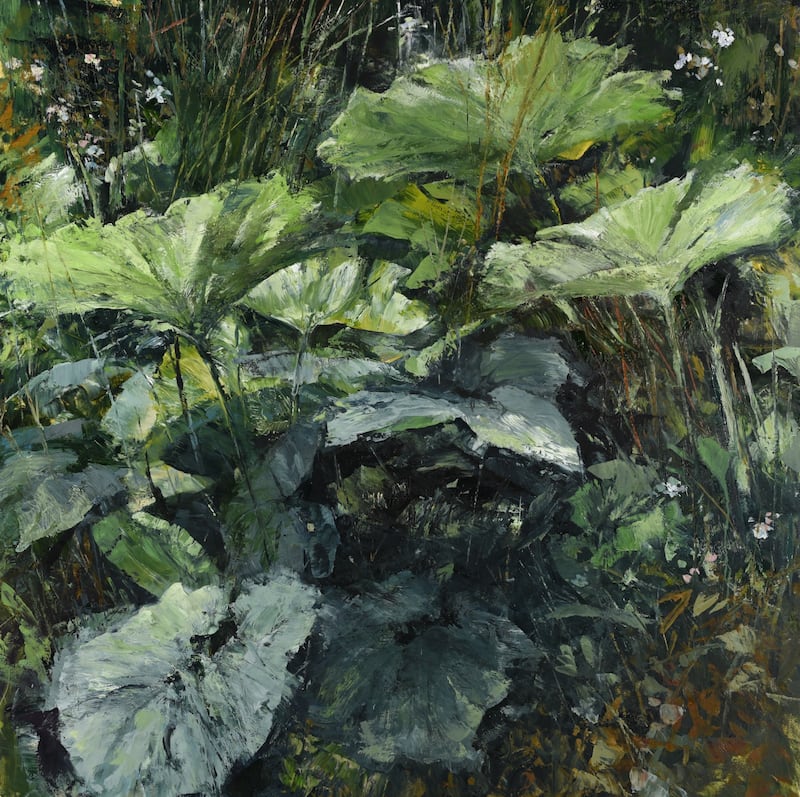Does art make you feel better? Not always, and not necessarily. Sometimes it troubles, provokes and frustrates. Sometimes it gives rise to rage or occasions a drive to change. Over the centuries, art has also played a vital role in health, healing and wellbeing.
Donald Teskey, the winner of the ninth annual Royal College of Surgeons in Ireland Art Award, joins an illustrious line-up and lineage. Previous winners, who receive a cash prize and a commission to create a work for the RCSI collection, are Remco de Fouw, who won the inaugural award, Amelia Stein, Miranda Blennerhassett, Domino Whisker, Colin Davidson, Mary A Kelly, Colin Martin and Stephen Murphy.
The power of art in health and healing is actually nothing new. Before microscopes, X-rays and the like, Michelangelo, Leonardo da Vinci and other famous artist-anatomists used their skills to see, literally, under the skin. Their goal was both to understand the secrets of how the body works and to draw and sculpt it more accurately. Looking closely at dead bodies gave their own work life. In 19th-century Ireland, Joseph Maclise was also both a surgeon and an anatomical artist.
The art/health equation works on both sides of the divide. Closer again to the present day, Waterford Healing Arts are at the forefront of exploring how art can support people in healthcare settings; while teachers and practitioners including Irwin Braverman, at Yale School of Medicine, and Brenda Moore McCann, at Trinity College Dublin, have run art-appreciation courses for trainee doctors to encourage them to look beyond the obvious, with a view to making better diagnoses.
READ MORE
Established in 2016, the RCSI award acknowledges this heritage, as well as the institution’s links with its near neighbour and partner in the initiative, the Royal Hibernian Academy. Running under the tagline “Medicine makes life possible, art makes it worthwhile,” the work of the chosen artists underlines the understanding that good health encompasses medicine, science, art, individuality, nature and the environment. In short, health and wellbeing are holistic.
Teskey has received the award for his painting Orchestral II, which was selected from a shortlist of five works at this year’s RHA Annual. (The four other shortlisted pieces were Cubist Bull by John Behan, Homage to Paint and Protest by Liam Belton, At the Starlit Sill I Let Them Draw Near by Eileen Leonard Sealy, and The Wait by Sadhbh Mowlds.) Orchestral II does not initially scream health benefits, but this is why the award is so interesting.
Teskey’s painting is of abundant green butterbur growing on the banks of the River Dodder in Dublin as it passes through Bushy Park, close to the artist’s Dublin studio. Once notoriously filthy, as reported earlier this month by Ella McSweeney in The Irish Times, the Dodder has been the subject of attention and care from local and community groups, although there is still more work to do.
[ 5,313 works submitted, 515 on show: RHA Annual Exhibition 2024Opens in new window ]

Teskey was drawn to the river by locality, with a greater focus born of necessity during the pandemic. He had been making paintings on the Dodder going back to 2017, taking, as artists do, a sketchbook on his walks, and noticing the sudden astonishing lushness of summer. “It’s full of greenery and wildlife. The light is amazing. You see amateur photographers waiting for the kingfishers. So many people get an immense amount of pleasure being there.”
A native plant, butterbur (Petasites hybridus) got its name from the practice of using it to wrap butter, keeping it cool in the days before fridges. It has also been known as “plague flower” and “pestilence wort”, as it was believed it could help to heal in that historical, even more devastating pandemic. Butterbur actually has an extensive history in folklore as a medicinal plant. The English herbalist John Gerarde, writing in the 1500s, promoted it as a cure for the plague, “because it provoketh sweat and driveth forth from the heart all venim and evill heate”. It also killed worms, and its powdered root “cureth all naughty filthy ulcers, if it be strewed therein”.
Nicholas Culpeper, the 17th-century physician and herbalist, claimed a wider use for butterbur, as “a great strengthener of the heart and cheerer of the vital spirits”. He advocated taking it as a powder in wine to resist poisonings, while the root, again powdered in wine, was said to be good for shortness of breath, and helpful in dealing with acne.
Maud Grieve’s book A Modern Herbal, published in 1931, also notes butterbur’s usefulness for love divination. A young unmarried woman should strew the seeds “half an hour before sunrise on a Friday morning in a lonesome place”, but take note: “It is looked upon as a bold, desperate, and presumptuous undertaking.” In his 2006 book Irish Wild Plants, Niall Mac Coitir notes butterbur as being used in traditional medicine to bring on a sweat and so “break plagues and fevers”, while in Irish folk medicine it features, as Mac Coitir notes, in the lore of Co Mayo and Co Limerick, as a treatment for rheumatism. Butterbur’s leaves appear in spring, as if out of nowhere, and can grow to as much as a metre across.

Teskey was known initially for his urban landscapes and then for his works exploring the drama of sea-crashed rocks; his focus was brought back home by the pandemic, and to the banks of his local river. His discovery of butterbur’s medicinal past came later. “I have done outdoor work, on a smaller easel in certain situations, but here I’m more inclined to go down with a sketchbook or camera, and really study the riverbank.”
He is looking, he says, for shapes and patterns, for the way light falls, and sometimes for the echoes of architecture in the background. “It’s important that this river is suburban. I’m not trying to create the illusion that it’s out in the world somewhere. There’s plenty of wild,” he says. In one of those lovely serendipities, he hadn’t known about the folk claims for butterbur’s healing history until he began to research after becoming immersed in the paintings.
Compared with his city and coastal works, the pair of paintings Teskey showed at this year’s RHA Annual are almost indecently green, a defiant and perhaps welcome reminder that nature is tenacious, that it can and will recover if given the time, space and care. Does colour matter? Does he feel differently after spending a day painting, or living among green, as opposed to grey or blue, for example? “I think so,” says Teskey, who last year spent time in Callan, in Co Kilkenny, at the RHA’s Tony and Jane O’Malley Residential Studio. “That gave me the opportunity to be in the woods, to slow down. You barely meet another person,” says the Limerick-born painter.
While some landscape artists may draw the eye with a pleasant path, Teskey’s series of works from that period see golden light filtering through dark trunks, with cascades of ground cover making it abundantly clear that, glorious as this environment is, the essential nature of nature is other to us. We are the visitors here, and not all the worlds on this world belong definitively to us, or even invite us in.
Teskey is one of the artists whose name became an auction byword in the briefly overheated years of the pre-bust Irish art market. Slowing down has been important to him. “It was very exciting back then,” he says mildly. His shows at the much-missed Rubicon gallery were routinely sold out, the works often flipped, despite the best efforts of both artist and gallerist, at auction. It was heady stuff, but, he says, “It’s better when it’s slower. There’s more time, and I’m also a bit more mature in the process. I’m not quite as anxious.
“I am lucky,” he continues, “in that my work has continued to be in demand,” but he agrees that there were choppy waters when the recession hit and the Rubicon closed. These days he shows with Oliver Sears. He does admit to “freaking out” about the popularity of his work at some point, and to a certain discomfort about the idea of people perhaps buying “a Teskey” as opposed to specifically wanting a particular one of his works for its own qualities, but the work itself is what has always mattered most to him. “I still have the image in my mind,” he says. “Of the time in my primary school when the teacher looked at my drawing on the wall and praised it. I look back now and I feel it was the first time I was aware of myself as a person.”
Behind him in the studio as we talk is a wall of books and vinyl albums. He will listen to jazz sometimes, to help to get in the flow of work, and he describes how he will often begin with quite a formal and precise painting, to get the shape of things, before scraping it back and letting the feel of it all come through. People will comment, he says, how from a distance you can see the subject of his work, but get closer and you’ll find yourself lost an abstraction of brushstrokes.
In many ways that’s what art and medicine have in common, and where they differ too. There is the intense scrutiny, the looking to study and understand, and then the wild leap into feeling on the one hand, and the specifics of a diagnosis on the other. But medicine has its wild leaps, too, the experiments, the breakthroughs, the what-ifs. And that’s the value of this award, and of a work like Teskey’s Orchestral II: not because of the former folk-medicine uses of its subject but for the real wealth of its subject matter. We are looking not just at the huge potential of nature as medicinal plants but at nature itself, and of the untold value of a place of untamed green, flourishing on an otherwise vaguely anonymous suburban riverbank, there for all to enjoy, to get lost in – to value and to benefit from, too.
The RHA Annual Exhibition ends on August 4th, rhagallery.ie. For more on the RCSI Art Award see rcsi.com


















